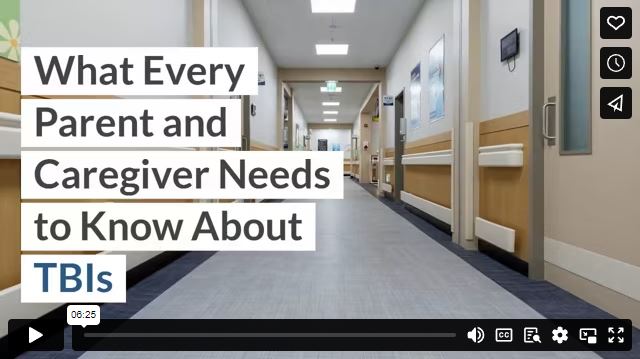If newborn babies came with handbooks, that handbook would have a chapter on Traumatic Brain Injury (TBIs). Unlike the stomach flu or a scraped knee, a TBI leaves a permanent mark on your child’s health. TBIs are a leading cause of death and serious injury in young people across the nation.
TBI (Traumatic Brain Injury) is considered to be one of the most significant public health issues in the United States, receiving new attention from advocates of military veterans and NFL players. Despite the increased use of helmets, TBI remains a high risk for youth, according to the Mayo Clinic and other respected research centers.

(danielkirsch / pixabay)
The Mayo Clinic reports that youth under the age of 4 are at the most risk for suffering TBIs, followed by youth in the 15-24 year-old category. TBIs also affect middle-aged and elderly people involved in slips, falls, sports, and vehicular accidents.
Ready to update your knowledge about TBIs? Take the 7-point quiz to assess your current TBI knowledge base. Then read the short explanations that follow the quiz questions for further information about the most recent research for parents and caregivers.
1. What is the difference between a concussion and a TBI?
TBI is an umbrella term that includes many kinds of brain injuries, including (but not limited to) concussions.
TBIs are grouped into three major categories: mild, moderate, and severe. The term, “concussion,” usually refers to a mild TBI, or a TBI in which the brain function was disrupted for 30 minutes or less.
Moderate TBIs refer to head injuries in which brain function was disrupted for 30 minutes to 24 hours. Severe TBIs are head injuries in which brain function was disrupted for longer than 24 hours, sometimes even rendering the injured person comatose or causing death.
2. Does a mild TBI (concussion) have lasting effects?
Yes. Even a mild TBI (concussion) has strong links to a multitude of health problems later in life.
New research shows that mild TBIs are linked to a host of negative health effects, many of which don’t surface until years after the injury. Mild TBI injuries in children and adults are linked to a higher risk of dementia, depression, strokes, hypertension, endocrine and neurologic disorders. Coaches, professional athletes, and the military are all paying attention and taking steps to increase awareness about TBIs among constituents.
3. What sport causes the most TBIs in the United States?
Cycling causes the most head injuries leading to emergency room visits, followed by football.
Does this mean football and cycling are off the table? No, wearing a helmet and increasing awareness can greatly increase your chances of participating in these sports in a healthy way. All physical activity carries inherent risk, and the risk of a sedentary life is substantial.
Although cycling is responsible for the most head injuries across the board, it is not the riskiest sport for the age group under 14. In children under the age of 14, more TBIs were caused by playground equipment than by football.
In children under the age of 14, most sports-related head injuries were caused by:
- Playground equipment: 35,058
- Football: 31,277
- Basketball: 20,242
- Cycling: 19,921
- Baseball and softball: 12,065
- Soccer: 12,709
- Swimming: 9,265
- Trampolines: 7,921
- Powered Recreational vehicles (ATVs, Dune Buggies, Go-Carts, Mini bikes): 6,036
- Skateboards: 3,101
(data from the Amercian Association of Neurological Surgeons)
4. What could be wrong with a parent or a coach questioning a youth athlete about TBI symptoms immediately after the injury has happened?
Research shows that student athletes under-report signs and symptoms of TBI when they are questioned in front of their teammates. Athletes should be interviewed in a private area – not on the sidelines. Since 2016, the NFL has required that players must be evaluated off the field by a medical professional after a head injury. Athletes report more symptoms when they are interviewed in a locker room by a trained medical staff member rather than by a coach on the sidelines.
5. How common are traumatic brain injuries in the workplace?
Research shows that traumatic brain injury cases account for nearly one quarter of work-related injury deaths and nearly half of fatal work-related falls. In addition, nearly one-fifth of reported work injuries are TBI-related (according to the Washington State Trauma Registry and the Washington Department of Labor and Industries).
Even if your youth isn’t actively involved in athletics, they could still become injured at their place of work, with slips and falls being the most common causes of TBIs. While TBIs can happen in many lines of work, construction workers experience TBIs at the highest rates. TBIs for manufacturing employees and warehouse workers are common, too.
6. Should I keep someone awake after a head injury?
If someone has a mild head injury, you don’t need to keep them awake unless they are exhibiting danger signs such as:
- Repeated vomiting or nausea that doesn’t go away
- Pupils of differing sizes
- Unusual drowsiness; unusually slurred speech; unusual behavior of any kind
- A headache that gets worse with time
- Seizures
- Difficulty recognizing people or confusion
If you see your child or youth showing any of these signs or symptoms, they need to be seen in an emergency department immediately.
7. What is the government trying to hide when it comes to youth TBIs?
The government is not suppressing information about TBIs so that the emergency rooms won’t be so crowded. The helmet industry is not suppressing information about TBIs so that people will continue to buy their helmets and feel a false sense of security. The government is trying to educate the public in regard to TBIs. The CDC’s Heads Up Initiative is the latest example of a public health campaign aimed at raising awareness of TBIs in the American public.
In conclusion, TBIs include mild, moderate, and severe injuries to the brain. TBIs – even mild ones – can have serious and long-lasting effects on a young person’s developing brain. Recognizing the signs and symptoms of a TBI will help you seek the proper medical attention and address the injury in a timely and successful manner.
It’s also important that you get the compensation that you deserve for medical bills and other expenses when your child sustains a TBI. Talk to a TBI attorney in Las Vegas. They can help you understand the merits of your legal case and stand up to Big Insurance so that you get the proper reward for what your family has endured.
Video

